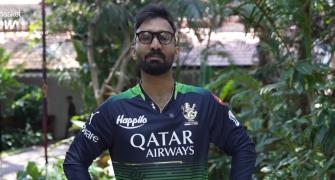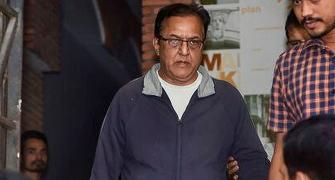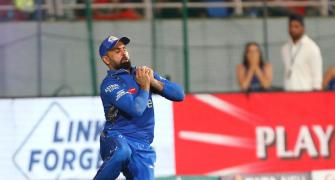Prevention is better than cure, went early medical wisdom. The latest from the world of cardiac research is that detection is better than prevention.
As mankind faces its biggest threat in the form of heart problems afflicting the young, research is underway at a frenetic pace around the world to come up with techniques for early detection of heart trouble.
The Boston Globe reports that the use of sound and light in detecting clumps of fat not bigger than a grain of rice but all primed to rupture and cause fatal blockages, is the talk at major meetings of cardiologists.
'It's like a mystery novel. You have the smoking gun, which is a heart attack,' Dr Sergio Waxman, a cardiovascular researcher at Lahey Clinic and leader of a plaque-detection trial, was quoted as saying. 'The question is, how do we prevent this from happening?'
InfraReDx, a Burlington-based biotech company has already raised $ 50 million from investors for creating a plaque detection system.
Agreeing that it's a systemic disease that calls for systemic treatment, Dr James E Muller, chief executive of InfraReDx told the Globe, 'If you go into a coronary care unit, you'll find it's full of people who've been taking their statins to lower cholesterol and even taking an aspirin -- the best systemic therapy possible -- and they still have a heart attack.'
To locate that one spot in the artery causing the clot, researchers must go directly into the heart sine sufficiently detailed photos can't be taken through skin, bone, and muscle.
Which is nothing new, that's what angioplasty is all about, isn't it?
Not quite, says Dr Momtaz Wassef of the US National Heart, Lung, and Blood Institute. While the picture-taking systems used during angioplasty are good at spying big blockages, they're apparently not so good when it comes to smaller, rupture-prone plaques.
Coming
Also helping the researchers are thousands of heart patients across the world. Volcano, a California-based company, has 3,000 patients trying its advanced ultrasound system. The Massachusetts General Hospital is using a technique measuring echoes of light called optical coherence tomography -- on about 150 patients. Another company called LightLab is selling the optical systems in Europe, China, and South Korea, and US trials are almost finished.
InfraReDx has also begun a trial of its system which uses infrared laser light to read the chemical fingerprints of plaques. The trial will ultimately include about 100 patients at five hospitals.
InfraReDx has also received preliminary US Food and Drugs Administration approval, but only to use its technique in human arteries; it says nothing about the system's ability to detect fatty deposits. The company will seek approval for that more-specific use in March.
The plaque-detection systems are limited to patients already undergoing invasive procedures such as angioplasty and who have had a life-threatening heart problem. The systems' developers argue that such patients are at dramatically higher risk and could especially benefit from detection of dangerous fat deposits.
The market, naturally, is huge: every year millions of patients worldwide undergo procedures to clear clogged arteries.
But what not many are talking about is what is to be done once the dangerous fat deposits are identified. Will high doses of cholesterol-lowering drugs be enough? Or, should more stents be implanted in the arteries to keep them open?
Echoing the naysayers is Dr Peter Libby, chief of cardiovascular medicine at Brigham and Women's Hospital. 'We need to draw a very careful line about raising hopes of the public that there will be some wonderful gizmo that will allow us to put the finger in the dike,' he told the Globe. 'We could save tens of thousands of heart attacks if we applied what we already know -- like the current guidelines on cholesterol, blood pressure, diet. But these are things that are boring to the public.'








